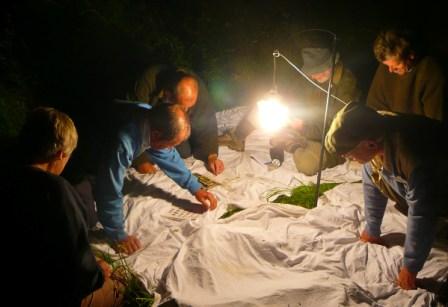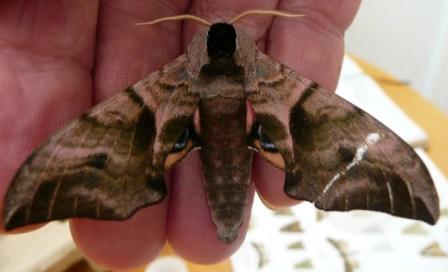.jpg) |
| Black Arches Moth |
Most people regard moths as small brown uninteresting beasts that are blamed for wrecking clothes in wardrobes. There are in fact over 800 species of moth that have been recorded in the UK and many are as spectacularly coloured as butterflies. They range from the large brightly coloured Hawkmoths to quite small but delicately patterned moths not much bigger than a thumb nail. Not all moths are nocturnal and some of the more brightly coloured examples such as the red and black Six-spot Burnet are often seen on the chalk downland or the Garden Tiger Moth that many people have disturbed in their gardens.
 |
| Moth trapping in the water works |
The best way of seeing moths not surprisingly is to run a lamp outside at night and see what is attracted in from the surrounding area. There are specialist bulbs that give out a type of light that attracts moths.
There are broadly speaking two ways of catching moths either by running a bulb over a white sheet for an hour or so and see what comes in. John has been doing this regularly on a Friday night in the water works and those who have come along have found it good fun, particularly the children. Alternatively a number of our group have moth traps, which use the same type of light, and are left running over night and then unpacked in the morning to see what has turned up. The moths don't seem at all concerned and are released once they have been identified.
Over the last year as a group we have run traps by request in the back gardens of people in the village. Everyone has been staggered by the number and variety of species living in their gardens so if anyone is interested contact John Newbould.
Last year we recorded 250 species in the village from 1,160 records including some quite rare and some migrant species
 |
| Eyed Hawkmoth. |
